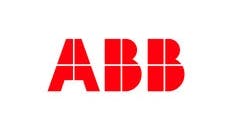Gary Rackliffe, ABB’s vice president of smart grids
Microgrids are not a new business for ABB. In fact, while much of the world is just becoming aware of the technology, ABB has spent the last 15 years installing about 11 MW of off-grid microgrids in remote areas of the world.
Four years ago the Switzerland-based technology company began to significantly accelerate its microgrid operation. That was when ABB acquired Australia-based PowerStore and its flywheel-based grid stabilizing generator, inverters and software technology.
Now ABB has elevated its focus on microgrids even more, making them part of what the global company calls its ‘Next Level’ strategy, according to Gary Rackliffe, ABB’s vice president of smart grids.
Specifically, microgrids are included in the company’s 1,000-day step change program, a hyper-targeting of certain products and services to accelerate revenue generation for the $35 billion company.
“We see this technology growing rapidly,” Rackliffe said in a recent interview. “By putting a focus on it, we expect to make a step change in our level of business in that area.”
Three opportunities for ABB microgrids
Why microgrids? Rackliffe pointed to three power sector needs that ABB microgrids address.
First, there is a need to electrify remote off-grid regions, like mines, islands or distant Alaskan villages.
Off-grid microgrids, especially those that include energy storage, can bring a new level of electric reliability to those not connected to a central grid. The controller – the microgrid’s software intelligence — allows the microgrid to orchestrate multiple forms of renewable generation, managing them in a way that minimizes use of fossil fuels and maximizes use of renewables, while maintaining microgrid frequency, voltage and stability.
The second driver is occurring on the grid. Hospitals, data centers and similar facilities are installing microgrids so that they can island from the main grid when there is a power outage. After separating from the central grid, the microgrid then keeps power flowing to the facilities by way of on-site generation.
“A lot of people are surprised to learn that if they have a solar rooftop and battery they cannot use it unless they have the ability to island from the grid. Those resources will trip off if there is a grid disturbance — unless they have the ability and configuration to island as microgrids,” he said.
The third market driver for ABB microgrids comes from utilities, he said. In search of ways to improve reliability, they are adding microgrid technology so that they can isolate existing pockets of generation and load. Then when a disturbance occurs on their system, that area is islanded off from the main grid and spared an outage. Rackliffe calls these ‘embedded utility microgrids.’
ABB offers all of the common components found in microgrids, such as controllers, solar, wind, electric vehicle charging and reciprocating engine generators. But what is most interesting is a technology ABB provides that is still relatively rare in microgrids: flywheel energy storage.
The company demonstrated the sophistication of flywheel storage when paired with battery storage at an off-the-grid port in Kodiak, Alaska. The port had added an energy-intensive crane that when operated would collapse grid voltage. So the operators added batteries to help stabilize the system. That didn’t entirely solve the problem. The crane was jeopardizing the longevity of the batteries by creating a recurrent and big draw – a load of 1.5 MW.
“Batteries are okay for frequent charges as long as they are small in magnitude,” Rackliffe said. “If you have a lot of frequent, deep charges or discharges, you can substantially age the battery.”
Flywheels, however, can accommodate that kind of task. So ABB installed 2 MW of flywheel capacity, which now handles the deep and frequent charges and discharges that the crane requires. (Read more about the Kodiak Island project.)
Future of microgrids
As the new grid emerges, one that increasingly uses solar and wind, the need will grow for the stabilizing influence of microgrids, according to Rackliffe.
Microgrids also offer a way to help offset peak demand, what Rackliffe sees as a primary motivator for Reforming the Energy Vision (REV), the New York plan to decentralize power generation and transform utilities into service platforms for distributed resources.
He notes that little financial incentive exists today for utilities to pursue peak demand reduction. But REV will change this by offering utilities a rate of return for offering certain services. Among those services can be peak demand reduction. Adding more distributed energy resources to the grid can reduce peak. Overlaying those systems with a microgrid, which can orchestrate their use, can make for an even better functioning grid.
What does all of this mean to ABB and the power industry in the future? “A lot more microgrids,” Rackliffe said. “There is a role for them, clearly.”








